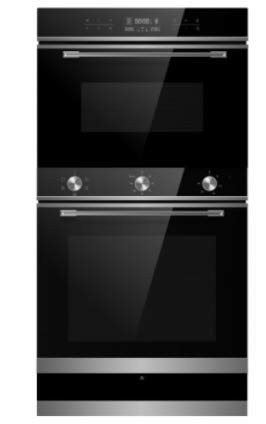Understanding Electric Ovens and Hobs: Your Guide to Cooking Efficiency
Electric ovens and hobs have changed the cooking landscape, offering home cooks and professional chefs a dependable, efficient, and constant way to prepare meals. As technological advancements continue to affect device style, the efficiency and performance of electric cooking systems have actually substantially improved. This short article delves into the features, benefits, and considerations surrounding electric ovens and hobs, offering a comprehensive overview for anyone wanting to upgrade or invest in kitchen appliances.
What Are Electric Ovens and Hobs?
Electric ovens are kitchen appliances created for baking, broiling, roasting, and other cooking methods that need regulated heat. They utilize electric coils or glowing heat components to create and maintain the wanted temperature level. Electric hobs, typically referred to as electric cooktops, are flat surface areas with heating aspects that permit pots and pans to be placed directly on them for cooking.
Table 1: Key Differences Between Electric Ovens and Hobs
| Feature | Electric Oven | Electric Hob |
|---|---|---|
| Primary Function | Baking, roasting, broiling | Heating pots and pans for cooking |
| Heating Method | Electric coils or glowing elements | Induction, radiant, or ceramic aspects |
| Operation Temperature Range | Approximately 500 ° F (260 ° C | ) Varies by design; normally lower than ovens |
| Cooking Styles | Versatile; appropriate for various meals | Mainly stovetop cooking techniques |
| Area Requirement | Normally built into cabinetry | Frequently standalone or integrated options |
| Energy Consumption | Generally higher, depending upon usage | More energy-efficient with induction hobs |
Advantages of Electric Ovens and Hobs
When considering electric ovens and hobs, it's necessary to comprehend their numerous advantages, which can improve the cooking experience.
1. Consistent Heating
Electric ovens and hobs provide even and consistent heating, which is important for numerous cooking methods. our homepage ensures that dishes prepare uniformly, reducing the opportunities of overcooking or undercooking particular areas of food.
2. Security Features
Modern electric ovens and hobs come equipped with different safety features to prevent mishaps in the kitchen. For example, numerous models consist of automated shut-off functions, hot surface area signs, and kid security locks.
3. Easy to Use
Unlike gas models, electric ovens and hobs are straightforward and user-friendly. The simplicity of turning on a dial or pressing a button makes them accessible for cooks of all ability levels.
4. Versatile Cooking Options
With different cooking techniques possible, from baking to simmering, electric models are flexible sufficient to accommodate a vast array of culinary designs and preferences.
5. Cleaning up and Maintenance
Electric ovens usually feature smooth surfaces that are simple to clean, especially designs with self-cleaning capabilities. Hobs, especially induction types, likewise offer a flat surface area that is easy to clean down, making maintenance a breeze.
Popular Types of Electric Ovens:
- Conventional Ovens: Ideal for traditional baking and roasting.
- Convection Ovens: Circulate hot air for much faster, even cooking.
- Microwave Ovens: Use electro-magnetic radiation for fast heating and cooking.
- Toaster Ovens: Small countertop ovens for fast tasks.
Popular Types of Electric Hobs:
- Induction Hobs: Utilize electromagnetic fields for rapid heating and energy effectiveness.
- Radiant Hobs: Feature electric coils that heat up to cook food.
- Ceramic Hobs: Offer a smooth surface and are easy to tidy.
Considerations When Choosing Electric Ovens and Hobs
While electric ovens and hobs offer many advantages, numerous elements must be taken into consideration to guarantee the ideal fit for your kitchen:
1. Area Availability
Assess the available kitchen area before making a purchase. Figure out whether you require a built-in design or a freestanding device, and determine the measurements carefully to make sure a great fit.
2. Cooking Needs
Recognize your cooking habits and preferences. If you frequently bake big amounts or cook complex meals, consider an oven with advanced features like convection settings or numerous racks.
3. Energy Efficiency
Try to find energy-efficient designs that can assist in saving on energy expenses with time. Energy Star-rated appliances can be particularly cost-efficient.
4. Spending plan
Set a practical spending plan that accounts for both the initial purchase and continuous operating expense. In addition to the appliance cost, factor in installation and prospective repair work.
5. Extra Features
Think about whether functions like smart innovation, programmable settings, or steam cooking options are very important for your cooking design.
FAQ Section
Q: How do I clean my electric oven?
A: Most electric ovens featured self-cleaning choices. If your model does not have this function, allow the oven to cool, then clean down surface areas with a mix of baking soda and water or an industrial oven cleaner.
Q: Is induction cooking safe?
A: Yes, induction cooking is thought about safe as the heating element just triggers when suitable cookware touches with it, reducing the risk of burns.
Q: How long does it take for an electric oven to preheat?
A: Preheating times vary based upon the oven's design and temperature setting but usually range from 10 to 15 minutes.
Q: Can I utilize any pots and pans on an induction hob?
A: No, just ferromagnetic cookware is suitable with induction hobs. Look for induction compatibility before use to prevent damage.
Q: What is the distinction in between a stove and a standard electric oven?
A: A convection oven includes a fan that circulates hot air, ensuring even cooking and reduced cooking times compared to a standard electric oven, which does not have this feature.
Electric ovens and hobs offer a modern-day option to different cooking needs, using effectiveness and dependability in the kitchen. As customers evaluate their options, comprehending the features, types, and factors to consider will allow them to make educated choices. Whether one is an occasional cook or a culinary enthusiast, electric home appliances can improve the overall cooking experience, bringing benefit and imagination to the table.

